White Sapphire vs Diamond – What Are the Differences?
Recently, we had received a number of emails about diamond alternatives for engagement rings. As it turns out, there are a number of readers who are specifically interested in the differences between white sapphire vs diamond engagement rings.
One question led to another which ultimately resulted in this write-up. So, if you are someone who is doing research or sitting on the fence between these gemstones, you’ve come to the right place.
In this article, you will discover the pros and cons of buying a white sapphire versus a diamond. We also performed an indepth video comparison which reveals the visual differences in various environments.
First of All, What is a White Sapphire?
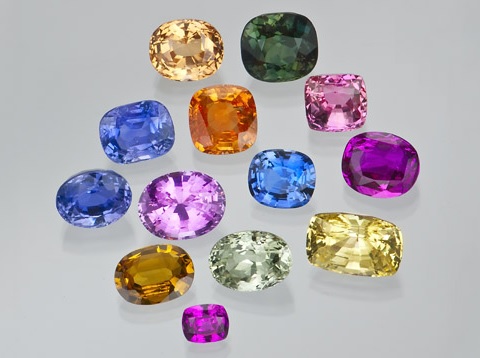
Different color hues of sapphires. Source: Gemological Institute of America
Most people stereotype sapphires as being blue in color.
However, did you know that sapphires don’t just come in blue hues and actually exist in several colors naturally? In fact, sapphires can exist in a range of colors like pink, purple, orange, yellow, green, black and colorless (white).
White sapphires belong to the family of corundums which is characteristically comprised of aluminum oxide and this gives them a cloudy looking appearance due to their chemistry and formation process.
White sapphires have a score of 9 on the Moh’s scale which makes them relatively hard when compared to other minerals. They also have a lower refraction index which impedes optical performance; resulting in less fire and dispersion.
Due to their colorless appearances, there are jewelers who actively market them as being identical to diamonds with the added advantage of having lower prices. For the record, I am calling bullshit on these claims and I will go into more details later to show you why.
Next Up, What is a Diamond?
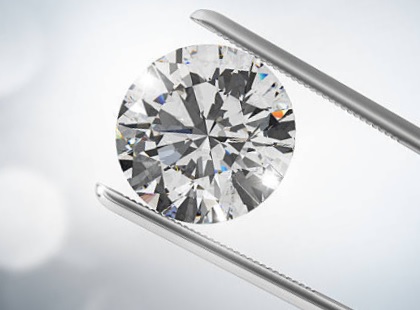
Diamond is made of carbon which is a common element found everywhere on Earth. Yet, it is the hardest material known to mankind and has the highest rating of 10 on the Moh’s scale.
To give you an idea of how this transcends into actual hardness, a diamond is 4 times as hard as a white sapphire. In fact, a diamond is so hard that it can only be scratched by another diamond; making them extremely durable.
The secret to the diamond’s superior strength lies in the covalent bonds between its atoms and crystalline structure. The unique covalent bonds also makes them extremely inert and one of the best conductors of heat.
Due to its superb hardness and light refractive properties, diamonds can be polished to extreme precision and luster. This is the reason why diamonds tend to have better sparkle and performance compared to other forms of minerals.
In the jewelry industry, the quality of the diamond is determined using GIA’s system of 4Cs; cut, clarity, carat and color.
Side by Side Comparison of White Sapphire vs Diamond Ring
In the following video, a loose white sapphire mounted on a temporary holder is compared against a diamond ring from Brilliant Earth. This diamond ring was purchased as an anniversary gift for my wife.
If you are interested, you can see complete details of the vintage ring in this post.
For best viewing resolution, select HD quality and view the video in full screen.
When comparing gemstones for light performance and cut quality, the easiest way to do so is to view them under different lighting conditions. In neutral fluorescent lighting, the contrast patterning and brightness of the gemstones could be assessed.
In the video above, you probably noticed that the white sapphire has a lot of dark areas and a messy look due to its poor contrast patterning. Also, it takes on a glassy appearance and has a less lively interaction with light.
During the next segment of comparison, we assess the fire and sparkle factor of both gemstones in spot lighting. Once again, the white sapphire displays disappointing performance due to the low amount of fire it exhibits.
Testing a Diamond And White Sapphire With a Gem Tester
Pros And Cons of Buying a White Sapphire
Compared to a diamond ring, the only advantage of buying a white sapphire ring lies in their lower cost. Personally, I have absolutely no love for white sapphire engagement rings because they belong in a category of gemstones which pleases no one.
Let me explain why.
My main gripe with white sapphires is that they have a cloudy-whitish appearance. As a result of the mineral composition, this hazy nature of the gemstone saps the life out of it and impedes sparkle.
Why would you ever want to buy a dull looking ring and wear it on your finger?
Also, because of the inherently lower costs associated with them, they are usually cut to sloppy standards. This is because skilled cutters cost more and the time needed to craft a rough stone equates to higher expenses.
Since white sapphires don’t sell for much to begin with, there is little practical incentive for polishers to spend the extra effort and manufacturing costs to ensure better light return.
Another problem with white sapphires is that they scratch relatively easily and are not as durable as diamonds. They are prone to chipping and can lose their luster if care is not taken by the wearer in their daily activities.
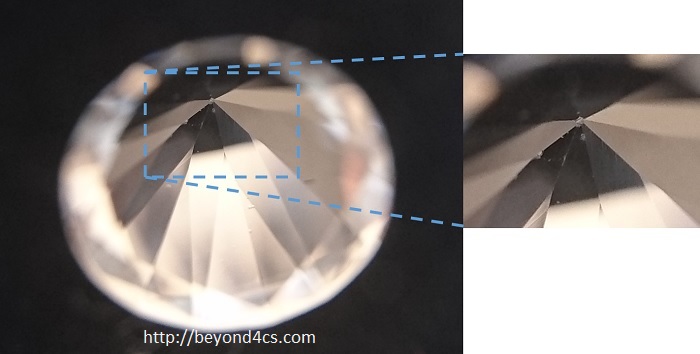
Chips and nicks at facet junctions of a white sapphire gemstone.
Price wise, white sapphires are on a middle ground in the world of gemstones. This makes the basis of buying them based on cost a weak argument. There are plenty of CHEAPER options in the market like cubic zirconium (CZ) which perform better and look better to the eyes.
It’s a triple whammy because you don’t get better appearances nor do you get better value for money when you buy white sapphire rings. Now you see why I hate absolutely hate the idea of buying them?
Pros And Cons of Buying a Diamond
The diamond has amazing material properties which gives it superior strength, durability and optical performance. These characteristics enable them to be polished with extreme precision and create long lasting pieces of jewelry.
Due to the diamond’s popularity in engagement rings and wedding jewelry, there is a huge selection of designs and options available for all kinds of budgets. This is something you don’t get with white sapphire rings.
To illustrate this, here’s one of my favorite floating halo diamond engagement ring designs from Blue Nile which features a suspended halo that elevates the center stone.
While the diamond is an amazing gemstone for many reasons, one of the drawbacks is the price they costs. In fact, diamonds are the most expensive gemstone (price per carat) and the demand for them is actually engineered through clever marketing campaigns.
Cost of White Sapphires vs Diamonds – A Price Comparison
To give you an idea of price differences between a white sapphire and a diamond, I’ve listed two 1 carat size examples below. Feel free to check out the full listing details by clicking on the images…
One point I want to highlight is that natural white sapphires are not cheap and the higher quality ones can go up in costs very quickly. On this basis, if you are considering alternate gemstones because of budget constraints, white sapphires aren’t your solution.
Also, we are not doing an apple to apple comparison as I have selected an extremely well cut diamond in contrast to a mediocre white sapphire gemstone. If you were to scale down in the 4Cs and go lower in color/clarity/cut, your cost would decrease.
In fact, you could possibly buy a 1 carat diamond of decent quality for around $4,000 like this. For people who are working with a tight budget, shopping smart can actually help you stretch your dollars.
For example, if you are buying a diamond and want to get better value for money, you might want to consider I, J or K color diamonds with SI1-Si2 clarity. The trick here is to look for eyeclean diamonds where the inclusions cannot be seen with the naked eyes.
One of the best ways to cherry pick a diamond is to shop at vendors like James Allen or White Flash where they have a ready selection of diamonds with HD videos.
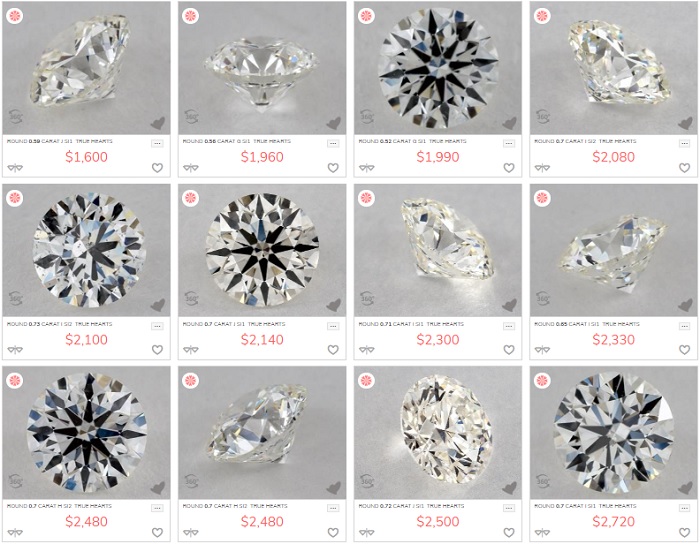
White Sapphires or Diamonds? Which is Better?

Being a practical person, I can tell you that diamonds are hands down the better option in comparison to white sapphires. Not only do diamond rings have better sparkle and glimmer, they are also long lasting and easier to shop for.
Given a choice between them, there’s absolutely no reason why you should buy a white sapphire ring unless there is a special meaning or symbolism to do so. If budget is your priority, there are better diamond alternatives compared to white sapphires.
Having said that, I also recognize that the needs and desires for engagement rings vary greatly from person to person. Your unique situation will influence the buying process and you should understand it is perfectly fine if you don’t buy a diamond for your proposal ring.
But please do yourself a favor and stay away from buying a white sapphire ring.
Here’s my advice. You should take all the time you need to adequately research and make an informed decision based on what your recipient wants. This will prevent you from running around in circles and help you find something she likes.
Best of luck with your engagement ring purchase!
Related Articles
Leave A Comment

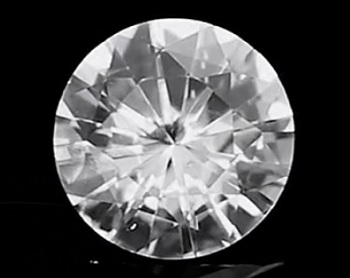
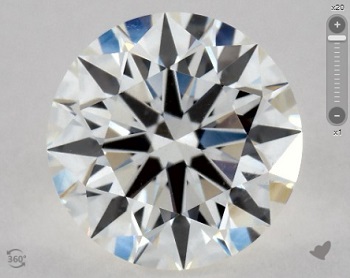
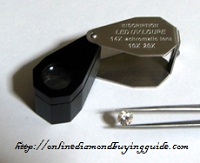
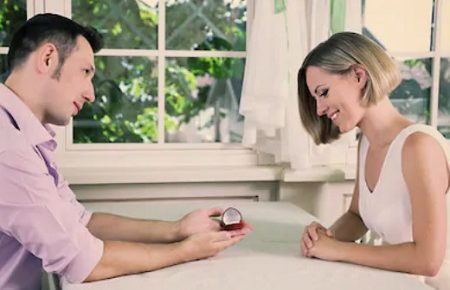
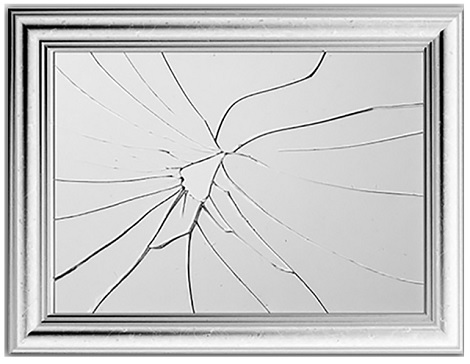
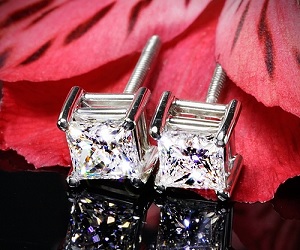









10 Comments
I’m concerned about ethical practices in the diamond industry and the use of them to fund illicit operations. This was one of the reasons that spurred me to do some research into buying colorless sapphires instead of diamonds.
First of all, it’s extremely hard to find a conflict diamond now even if you wanted to. There are strict regulatory laws preventing them from happening in countries where there are mines. Secondly, let’s just assume conflict mining practices still exist. I could counter argue that white sapphires are subjected to these issues as well. It’s a fallacy to assume that this happens only to one and not the other.
https://beyond4cs.com/faq/diamond-origins/kimberly-process/
For what’s its worth, diamonds have come into the spotlight due to the popularity. And there are even stricter laws in place for mining and ecosystem disruptions compared to mining operations for other gemstones.
Your main push point for diamonds is that they are brilliant and sparkle better. I don’t disagree with this but what I have a problem with is that you assume every one wants such an appearance. What if I wanted a more understated look of a created white sapphire compared to a diamond white sapphire?
Here’s the thing. If you want an “understated” look there are plenty of other options to look at. For example, a piece of rock from your backyard may fit the bill. Cubic Zirconia (CZ) gemstones which cost a few dollars would be able to achieve the look you want at a much much much lower cost. I hope you get the point.
When you look at all the benefits and advantages of buying a diamond vs white sapphire, I can tell you outright that white sapphires are terrible purchases if you adopt a practical mindset to analyze things.
I have a question about AAA rated white sapphires being sold by a company called AfricaGems. Have you heard of them? What’s the difference between a lab created white sapphire vs diamond in terms of physical properties?
I’ve never heard of the company. As for the question about lab created white sapphires vs diamonds, I would say lab created stones would be identical to the natural mined diamond in terms of chemical and mechanical properties. Given how natural sapphires are formed in the ground, lab made stones would be better quality than those being mined naturally due to their controlled synthesis
In your video comparison of the white sapphire next to diamond, I actually think that the white sapphire has good sparkle especially in sunlight. You mentioned that they are as good as other alternative gemstones. Do you have other videos that show a white sapphire next to them like you did for the diamond?
If you are considering other types of gemstones, I would recommend CZ as they are really cheap and have much better optics than WS. I do have a video that compares a CZ against a diamond on my youtube channel. That might interest you.
The link is here: https://www.youtube.com/user/onlinediamondbuying/
Here I was wondering do white sapphires look like diamonds and I found your article on Google. Thanks for your website and I see that you did a wonderful job at educating the public. The Bluenile ring is stunning. Congrats! Is it made of platinum or white gold?
Thanks for your compliments; I really appreciate it. The ring is made using 14k white gold and is very affordable.